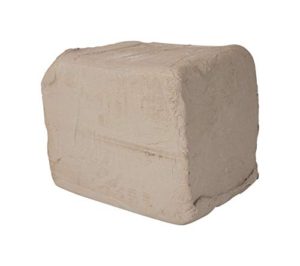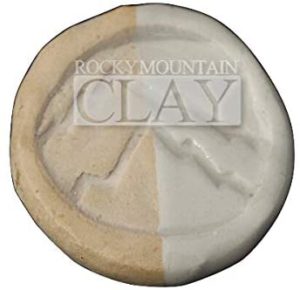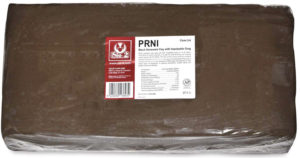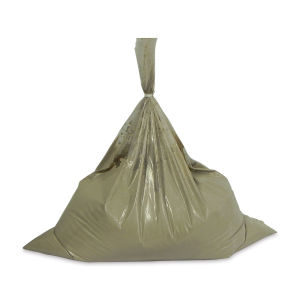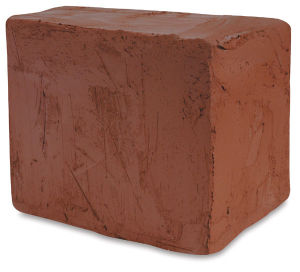While pottery can be considered one of the oldest art forms in the world, it’s still quite a delicate process. It requires years of practice to learn even the basics, and years more to perfect the whole craft.
Yes, learning pottery can be challenging and overwhelming at best — but choose the wrong clay to work with and you’ll find yourself in quite the pickle.
The smartest way to ensure that your learning process goes smoothly is to find out what the best pottery clay for beginners is. (Easier said than done.)
Below, we’ve made a short but comprehensive guide on how to choose the best pottery clay for beginners plus our top five (5) recommendations for 2021.
Best Pottery Clay Review
Stoneware clay is best for beginners who have had little to no experience with pottery. It’s soft and malleable and is perfect for either hand-building or wheel throwing techniques.
When choosing stoneware clay, look for one with fine grog and one that has a moderate water absorption rate. This will help it maintain its form after you’ve shaped it.
Here are our top five (5) recommendations for the best pottery clay for beginners:
AMACO Buff Stoneware Clay No. 46
The AMACO Buff Stoneware Clay is a high-fire clay popularly used by potters to make durable dishes, planters, and other utility and decorative ware.
If you’re using either hand-building or wheel throwing techniques, the AMACO Buff Stoneware Clay is a great choice.
This stoneware clay is soft with fine grog and excellent malleability. Its moisture content is good, although there may be some instances when the clay body is too wet to manipulate.
Just make sure you’re wedging your clay thoroughly to get rid of all the air bubbles and moisture before beginning your work.
While the price range (around $30) and the convenience of the AMACO Buff Stoneware are great, the volatility of the product can be frustrating for complete beginners.
So, it’s best to get this product if you’ve had previous experiences with pottery and clay work.
What we like:
- It has a finely ground grog that helps with clay stability.
- It has excellent malleability, making it easier for beginners to manipulate.
- It’s convenient and affordable.
What we don’t like:
- The clay body can get very wet and bubbly, so you might need to perform some extra wedging to get the consistency that you want.
Rocky Mountain Clay BMX (Best Mix) Clay
This stoneware clay from Rocky Mountain Clay is a mid-fire clay, best used for wheel throwing or hand-building projects.
The BMX is as smooth and soft — without grog — making it very easy to use. For best results, Rocky Mountain Clay recommends that you fire the clay at cones 5 to 7.
While it’s perfectly fine to use the BMC Clay for hand-building pieces, wheel throwing might be the best technique to use because of the fineness of the clay’s textures.
Despite its subtle gray color, the BMX Clay turns white after firing, making it the perfect clay if you plan on painting your pieces after.
Because of its moisture rating, the BMX can very easily develop mold over long periods of storage. This can be easily remedied with bleach or hydrogen peroxide.
What we like:
- This stoneware clay has no grog, so it’s gentle on the hands, regardless of the method you use.
- It fires white, so you have more freedom in terms of decoration and design.
- It has an excellent water absorption rate.
What we don’t like:
- This clay can easily develop molds because of its moisture level.
Sio-2 PRNI Black Stoneware Clay
Another mid-fire stoneware clay that comes highly recommended is the PRNI Black Stoneware Clay by Sio-2.
This clay body has a plasticity level, making it easier to control and shape. It’s great for wheel throwing, because of its 40% grog, but it’s also great for hand-building projects.
Firing the clay at cone 5 will give you a classic black coat, but if you want to achieve a metallic blue effect, Sio-2 recommends lowering the temperature.
Super smooth and sturdy, this clay is definitely a great product for both beginners and professionals alike. Just be careful not to get it on your clothes as it can leave a nasty stain.
What we like:
- It has a smooth and sturdy body that’s perfect for both wheel throwing and hand-building methods.
- You can experiment with its design by lowering and/or increasing the temperature.
- Leaves you with a classic and aesthetically pleasing piece after firing.
What we don’t like:
- It can stain light clothing.
Standard Ceramic White Stoneware Slip
If hand-building or wheel throwing isn’t your thing, then the White Stoneware Slip from Standard Ceramic is the best choice for you.
This stoneware slip clay is simple to use and is great for casting, decorating wet clay, or joining separate pieces. It makes mixing clay a total no-brainer; you just pour the slip into a bucket, make sure to mix it well, and you’re good to go!
Want your slip to come in different colors? You can definitely do that by adding tints to your slip mixture. The firing rate is at cone 6 for the Standard Ceramic Stoneware Slip.
The only downside we found for this product is its packaging. It comes in a plastic bag, which is standard for more stoneware slips. But this bag has several weak areas that are in danger of bursting.
Using stronger packaging materials for future shipments would be a great idea.
What we like:
- This clay’s preparation process is very simple, even the most inexperienced beginners can do it right.
- You can mix in different colors to come up with various designs.
- You can use it in combination with other methods, such as hand-building and wheel throwing.
What we don’t like:
- The packaging could use a little more reinforcement to avoid accidental bursting.
AMACO No. 77 Terra Cotta Stoneware Clay
This second one from AMACO is a low-fire stoneware clay made from a mixture of finely ground red and buff clays, and a medium-mesh grog.
It’s not the smoothest clay, which is why we don’t recommend it for wheel throwing, especially if you’re a beginner. This type of clay would do nicely with hand-building projects.
Firing this clay at cone 04 will give you a rich terracotta color, but if you want to achieve a darker, browner hue, you can raise the temperature to cone 05.
While the medium-mesh grog reduces the amount of cracking, warping, and shrinking, it can feel grainy and uncomfortable for most beginners. However, if you don’t mind the texture, then this is a great product to try.
What we like:
- The medium-mesh grog gives the clay more stability and shape.
- It offers a classic/historic color that’s fun to play with.
- It experiences less cracking and shrinking because of its mixture.
What we don’t like:
- It can feel rough on the hands.
Buyer’s Guide
The clay you choose can either make or break you in your learning process.
Several factors come into play when choosing the best pottery clay for beginners. These include:
- Workability
- Texture
- Water Absorption Rate
- Versatility
- Firing Temperature
Workability
Refers to the clay’s plasticity and flexibility levels. A beginner-level clay should have excellent plasticity while remaining strong.
Texture
Clay textures can be fine, medium, or coarse. This is measured by the amount of grog present in a clay body.
*Grog is pre-fired clay that is ground up and combined with clay to give it more grit and minimize cracking.
Water Absorption Rate
Wet clay is harder to control, especially for beginners. When choosing clay for the first time, aim for something with low to moderate water absorption ratings.
Versatility
Some types of clay may work great in hand-building projects but not so great with wheel throwing ones.
Choose a clay that can be used with a variety of methods.
Firing Temperature
Different clays have varying ideal firing temperatures.
Knowing the firing temperature for the clay you choose will help you decide what type of kiln you should buy, rent, or borrow to fire your pottery.
The Bottom Line
While pottery can truly be quite challenging, it should play out pretty smoothly if you have the right tools and equipment to do the job.
Above are just some of the best pottery clays for beginners in 2021. There are certainly other products that you’re welcome to try. But if you want to experience as few hiccups as possible, we highly recommend you stick with this guide.
Good luck!


